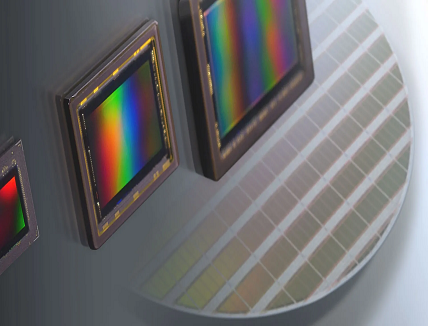
Global Image Sensors Market is predicted to have a CAGR of 8.2% during the forecast period of 2022 to 2030
You might have heard about sensors and sensing technologies a lot, as these terms are now pretty common with everyone. Sensors are used in most applications these days; even our mobile phones and smart watches come with high-end sensors that sense our body movements and haptics.
Such sensors are known to be very useful for several functions in industrial, commercial or even household needs. There are various types of sensors like position sensors, pressure sensors, temperature sensors, force sensors, vibration sensors, image sensors, etc., which are utilized for multiple purposes.
This article will give an overview of Image Sensors, which are utilized in various applications, including commercial, industrial, and leisure.
Image Sensors
Image sensor is an electronic device that converts an optical image into an electrical signal. It is employed in digital cameras and other imaging devices to digitize the image captured by the lens.
Most digital cameras, both handheld and stationary, and many other imaging devices rely on an image sensor. The camera’s lens collects light, which is then captured by the image sensor, converted into an electrical signal, and sent to the camera’s or imaging device’s processor, where it is converted into a digital image.
There are two types of image sensors:
- Charged coupled device (CCD)
- Complementary metal oxide semiconductor (CMOS)
Charged Coupled Device (CCD) –
A CCD image sensor comprises a number of capacitors, each of which carries an electric charge proportional to the pixel’s light intensity. The sensor contains a control circuit that will cause each capacitor to transfer its contents toward its neighbour. The final capacitor in the array of capacitors will unload its electric charge into an amplifier when it has finished transmitting its contents. CCD sensors may have a capability that allows for the conveyance of data using a way similar to a bucket brigade.
Complementary metal oxide semiconductor (CMOS) –
Each pixel in a CMOS image sensor is equipped with both a CMOS transistor switch and a photodiode, which enables the individual pixel signals to be enhanced in a manner that is distinct from one another. By manipulating these switches, it is possible to allow the signals to be received straight and in sequence using a high-speed comparison using a CCD sensor. Another advantage that can be gained from incorporating an amplifier into each individual pixel is a reduction in the amount of noise produced during deciphering the electrical signals that are transformed from the recorded light.
How does the Image Sensor Work?
The image sensor in a camera system receives photons that have been concentrated by employing a lens or other forms of optics. The information is conveyed to the subsequent step as either a voltage or a digital signal, and this will be determined by the type of sensor used, such as CCD or CMOS.
The primary purpose of the CMOS sensor is to convert photons into electrons, which are then converted, with the assistance of the ADC, into a voltage or a digital value with the help of an analogue to digital converter.
The manufacturer of the camera will determine the general components that are utilized within the device. The primary aim of this design is to convert the beam into a digital signal that can then be analyzed in order to trigger some forthcoming action. Consumer cameras contain additional components that allow for the image to be stored and viewed, whereas machine vision cameras do not have these components.
These sensors are offered in a wide variety of configurations and packaging options. The sensor’s overall size determines the pixel size and resolution. When choosing a lens and optics for a camera, it is necessary to understand how this sensor is arranged. Each lens is tailored to a specific sensor format and resolution to ensure optimal performance.
Overview of the Global Image Sensors Market
With the high demand for technologically advanced sensors for various applications, the global Image Sensors Market is heading towards an all-time high figure.
According to market research reports published, the global Image Sensors Market is predicted to have a CAGR of 8.2% during the forecast period of 2022 to 2030. Over this period, the said market segment is said to earn a whopping revenue of USD 45.2 billion by the end of the year 2030.
The market share of image sensors is currently expanding, and it is anticipated that the market penetration of image sensors in automobiles, the trend of miniaturization in various industries, and the introduction of modern dual cameras in Smartphones and advanced Tablets, as well as large amount of demand for high-end medical modern imaging solutions, will drive the market for image sensors during the forecast period. In addition to this, it is anticipated that throughout the period, the image sensor market would be constrained or hampered by the rising prices associated with the more modern manufacturing method.
Image Sensor Market Opportunities
The expansion of the Image Sensors Market can be attributed to several fundamental factors, including, but not limited to, increasing demand for advanced camera-enabled mobile phones. The decreased power consumption and increased compactness of modern and cost-effective CMOS image sensors are creating massive opportunities in the market. With the increasing use of a variety of image sensors and a variety of CMOS image sensor biometric applications and a growing number of other such factors, the said market is reaching new heights of revenue generation.
Now, as discussed in the above sections, with the immense opportunities flowing in the global Image Sensors Market, it is pretty evident that the said market segment will soon be entering the elite list of the top revenue-generating market sectors.
Considering the regional landscape of the Image Sensors Market, it is reported that the Asia-Pacific region has sheer dominance over other regions, which are North America, Europe and Middle-East & Africa.
So, with all the information discussed in this article, we can conclude that the global Image Sensors Market is one of the few sectors that is boosting its revenue year by year and will soon be on the top revenue-grossing market list.



















